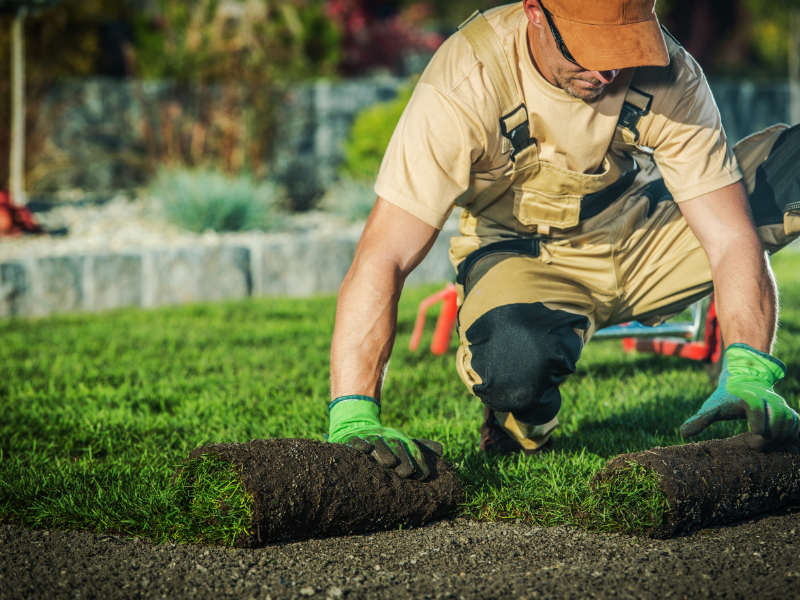Your Furbnow Privacy Settings
In order to give you the best experience, we use cookies for performance, analytics, personalisation, advertising and to help our site function. Want to know more? Read our Privacy Policy.
Published on June 21st, 2023
Energy efficient landscaping is a legitimate way to reduce your home’s energy consumption, be it shading your home from the sun to keep it cool or using sustainable-hardscaping systems to reduce your water consumption. As climates change around the world, it’s becoming increasingly important to ensure the surroundings of your home are built to last (and help reduce your bills).

Energy efficient landscaping is the act of designing and implementing (or retrofitting) the surroundings of a building to reduce its energy consumption and help it cope with Climate Change. It wouldn’t be surprising if you hadn’t heard of energy efficient landscaping before, it’s not commonly discussed and there’s not a great deal of info about it. But it’s a concept that’s been around since the late 1980s and has grown alongside concerns about the world’s climate.
As it’s set to become a popular topic we thought we’d help you get ahead of the curve and show you some energy efficient landscaping options you can implement. Changes range from the small, like having a compost heap, to the slightly Grand Designs, like earth sheltering (think Hobbit houses or the Teletubbies’ HQ).
It also offers the homeowner a chance to think creatively about the kind of home they want to live in by incorporating aesthetic changes with functional ones. A bit like retrofitting the interior of your home.
If you’re looking for advice on how to make your property more energy efficient you can book a home assessment with us, where an accredited surveyor will tell you exactly where your property can be improved and provide you with a plan on how to take the property forward and make it more energy efficient. You can book an assessment here.
That’s right, plants can help reduce your energy bills and your carbon emissions - and it’s not just about taking in carbon dioxide and emitting oxygen. Here’s a couple of moves you can make with our green stemmed friends.
Shading your home
Strategically growing trees and plants in order to shade your property can reduce your cooling costs. Given that the UK is experiencing hotter summers with a housing stock that’s not really built for such weather - trees and plants become an increasingly enticing proposition.
You need to be fairly strategic with where you grow these plants, the closer to your home the greater the shade they offer - although too close and you can risk the roots posing a threat to the property foundations. Making sure they’re placed by windows can help stop the sun’s rays beaming inside (and can create that pleasant dappled effect).
In terms of types of tree, evergreens tend to be a safe bet, although you may want to let sunlight in in colder months in which case Silver Birches can be a good shout, or Ash trees are easy enough to grow and maintain.
Growing vines or shrubbery can help add an extra layer of insulation to the outside of the building, although you want to plant the shrubbery at least 2 metres from the building to avoid damp and insects.
Bushes and shrubs can also be used as windbreaks to protect your home from draughts. This is actually pretty effective as it absorbs the oncoming wind, we recommend evergreens for all year round protection - just make sure they don’t block the sun out in winter.
We’ll caveat this with “embrace native plants - but be conscious about how they use water and how they’d handle hotter climates”. Native plants are already suited to the local climate so they use less energy and water to grow. It also helps preserve and grow the local biodiversity of organisms that live and use these plants.
That said as the climate continues to get hotter, you might want to look at plants and trees that are built for the future such as succulents which require little water to maintain.
At the more high-tech end of energy efficient landscaping, you can use technology to understand how much water your horticulture needs to grow and develop. Their central goal is to reduce water waste.
Smart irrigation systems use real-time data to adapt automatic watering schedules. These take into account when rain is forecast and what type of soil you have and the amount of exposure to the sun each zone in your garden receives. This means you never use more water than is exactly needed and ensures your flora remains healthy. Some examples include the Gardena Smart System or the Akenza Micro Irrigation System (other systems are also available so do take a look around). These systems operate much like smart lighting, using bluetooth or the internet to connect to an app on your phone for you to manage.
Hard scaping refers to all non-organic materials in a landscape, this could be a patio or your garden walls, and generally they’re not particularly sustainable. Concrete is an energy intensive material in its creation and it’s not great for letting things grow or live around or under it.
As an alternative you can consider materials like gravel or permeable paving which absorbs water rather than it rolling off of the surface and being wasted. This can reduce strain on your drains and helps contribute to groundwater supplies.
You might also want to think about using recycled materials or locally sourced materials if you want to reduce the carbon emissions used in making your decking or patio.
The long practised art form of mulching involves placing a thick layer of material over the soil around plants. This is used to stop weeds and keep the moisture in the soil, while acting as a barrier to drying the soil from the wind and sun.
Composting is the process of recycling organic matter naturally. This matter includes leaves and left over food, and it becomes a valuable fertiliser that’s used to enrich soil and plants. Anything that grows decomposes eventually; composting simply speeds up the process by providing an ideal environment for bacteria, fungi, and other decomposing organisms (like worms) to do their work.
Using composting and mulching practices in your home’s landscape has a couple of benefits. Composting kitchen scraps and garden waste reduces the need for synthetic fertilisers, enriches the soil with essential nutrients, and promotes healthy plant growth.
Mulching helps retain moisture in the soil, reduces weed growth, and insulates plant roots during extreme temperatures. These sustainable practices create a thriving ecosystem within your landscape while minimising waste. This could then help grow the trees that provide your home with shade or wind protection for example.
Green roofs, also known as vegetative or living roofs, are eco-friendly installations that bring a multitude of benefits, including improved energy efficiency. These roofs consist of a layer of vegetation and soil, providing a living, green cover atop buildings. Green roofs help enhance energy efficiency in multiple ways.
Namely, they provide additional insulation, acting as a thermal barrier that reduces heat transfer between the building and the environment. This insulation helps keep the building cooler in the summer and warmer in the winter, reducing the need to use your boiler. Additionally, green roofs absorb and retain rainfall, reducing stormwater runoff and easing the burden on drainage systems. By minimising the urban heat, greenhouse effect, and by enhancing natural cooling, green roofs prove to be a pretty sustainable, energy efficient way to run your home. In fact it’s so popular the EU has it as law that 17% of new builds need to include a green roof in future building planning.
Earth sheltering on the other hand is an architectural technique that involves using the earth's natural insulation properties to partially or completely surround a building with soil. Often these are built into the sides of hills or slopes in the ground
By integrating the structure into the earth, earth sheltering provides its own thermal insulation throughout the year. The surrounding soil acts as a natural insulator, keeping the interior temperature cooler in hot climates and warmer in cold climates. This results in reduced reliance on heating and cooling systems, which means energy savings and lower utility bills.
Earth sheltering also reduces the environmental impact of your home by minimising the need for traditional building materials which come with their own carbon impact and by using the earth's thermal mass as part of its heating system. It also contributes to improved stormwater management, as the earth absorbs and filters rainwater, reducing runoff and the strain on drainage systems. Earth sheltering is a pretty nifty sustainable architectural approach that offers environmental benefits and long-term energy savings.
If you’re looking for advice on how to make your property more energy efficient you can book a home assessment with us, where an accredited surveyor will tell you exactly where your property can be improved and provide you with a plan on how to take the property forward and make it more energy efficient. You can book an assessment here.
Written by

Oisin Teevan